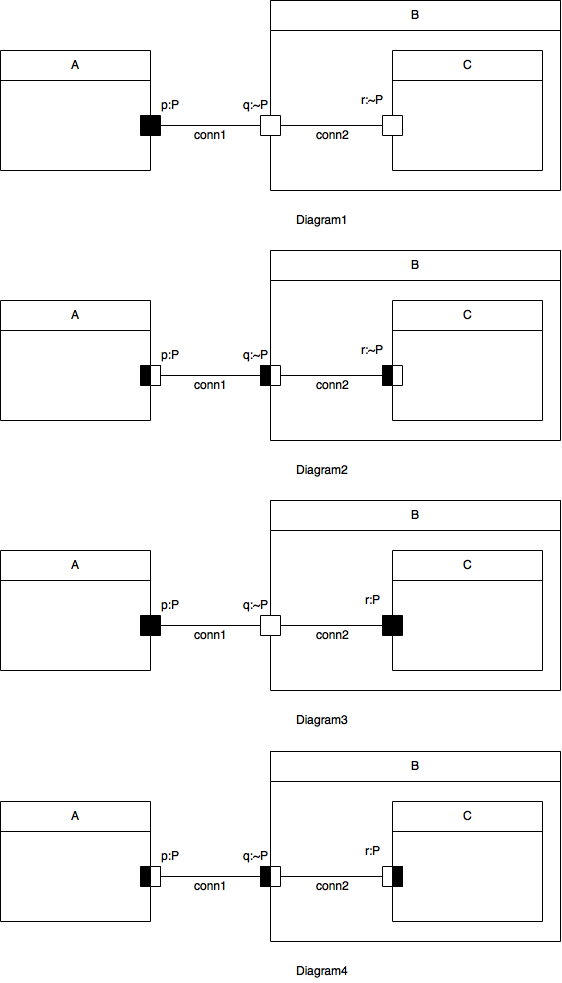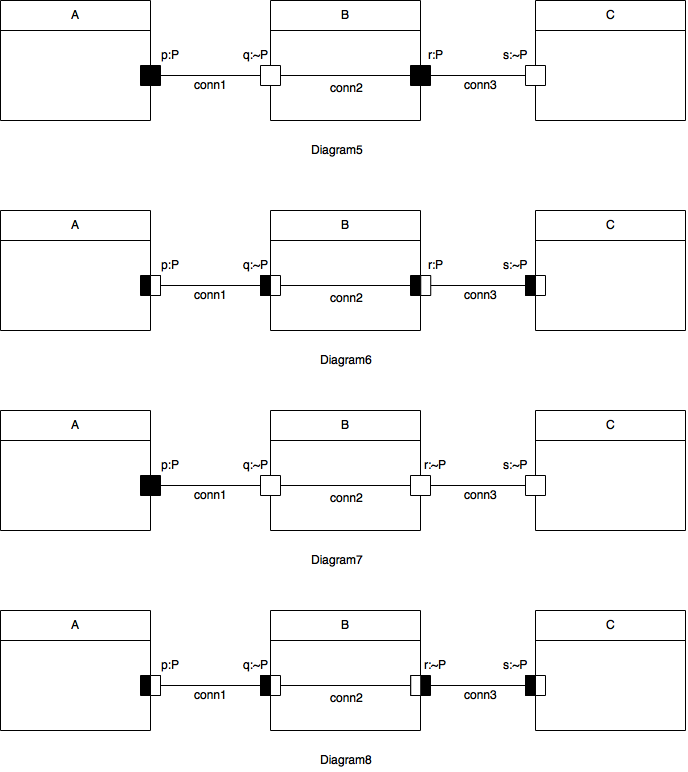Notice: this Wiki will be going read only early in 2024 and edits will no longer be possible. Please see: https://gitlab.eclipse.org/eclipsefdn/helpdesk/-/wikis/Wiki-shutdown-plan for the plan.
Papyrus-RT/UML-RT/Pass-Through-RelayPorts
UML-RT Relay ports and pass-through connectors
Understanding pass-through connectors and how they can be implemented in UML-RT (and Papyrus-RT) is the base of interesting modeling patterns. In order to be able to use these correctly, the following explanation has been written.
The following information was taken from Papyrus-RT Bug 487356.
The text is from Ernesto Posse based on a discussion with Bran Selic.
In Figure 1, Diagram 1 shows a legal (delegation) connector (conn2), connecting two ports (q and r) with the same conjugation. Diagram 2 makes the faces explicit. For a base port ( p) the outer face is white and the inner face is black. For a conjugate port (q,r), the outer face is black and the inner face is white. The rule is that a connector can only connect "opposite" faces. Diagram 3 is illegal because, as depicted in Diagram 4, a connector would connect faces with the same colour.
Figure 2 illustrates the case with a "pass-through" connector, where the protocol is *not* symmetric. Diagram 5 is legal, since, as shown in Diagram 6, connectors only connect opposite faces. On the other hand, Diagram 7 is illegal, because, as shown in Diagram 8, conn2 connects faces with the same colour.


